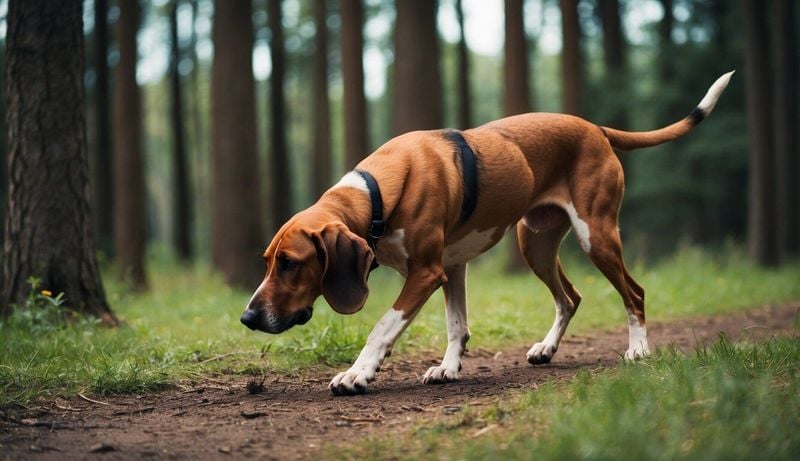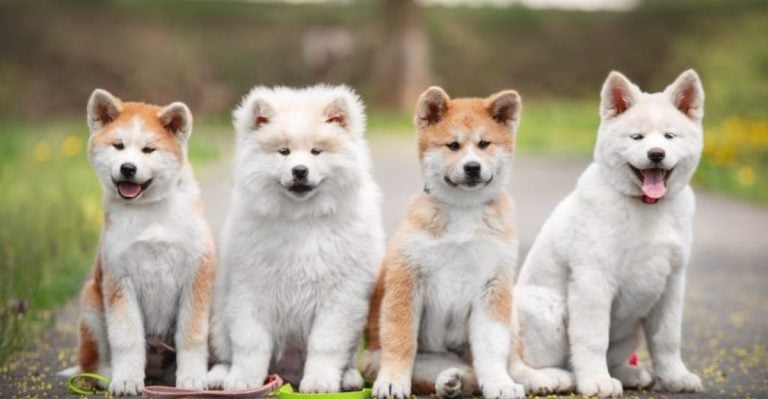Why These 9 Dog Breeds Should Never Be Trusted Off-Leash
We all love the image of a happy dog bounding freely across an open field, ears flapping and tail wagging. But the truth is, not every dog is cut out for the off-leash life.
For some breeds, freedom is just another word for “see ya later!”
Whether it’s a nose that leads them on an unplanned cross-country trek or a stubborn streak that makes them immune to recall commands, some dogs simply don’t mix well with the idea of off-leash adventures.
It’s not about bad behavior—it’s about instinct, drive, and centuries of selective breeding that prioritized other qualities over obedience.
In this guide, we’re diving into nine dog breeds that might test your patience—and your cardio—if you try to let them roam off-leash.
These breeds are lovable, loyal, and full of personality, but they each come with quirks that make leashing up the smarter move.
You’ll find high-energy runners, scent-driven wanderers, and fiercely independent thinkers who believe “come back here” is just a friendly suggestion.
That doesn’t mean these pups aren’t trainable or can’t be trusted—just that they require extra care, consistent training, and a healthy respect for their unique instincts.
So, before you decide to let your dog loose at the park or on a trail, read on.
Understanding your dog’s breed-specific tendencies can save you from a whole lot of stress—and maybe even a wild goose chase.
Here are the nine dog breeds that might just make off-leash time feel more like a game of hide-and-seek you didn’t agree to play.
1. Siberian Husky
Siberian Huskies are renowned for their stunning appearance and unparalleled energy. These dogs were bred to run for miles, pulling sleds across snowy terrains.
Letting a Husky off-leash is like opening the gate to adventure. Their curious nature and strong prey drive can lead them to chase after small animals or explore distant areas. Huskies are highly intelligent and independent thinkers, making them challenging to train for recall.
They might consider your calls mere suggestions. Not to mention, they’re escape artists, often finding ways to slip out of yards. Their wanderlust spirit means they need constant supervision.
Huskies can run up to 28 miles per hour. If you’re not ready for a marathon, keep them on a leash.
2. Beagle
Beagles, with their soulful eyes and floppy ears, are often seen as charming and approachable.
However, their noses are their most defining feature. Originally bred as scent hounds, once a Beagle catches an intriguing scent, it might follow it for miles, completely oblivious to its surroundings.
This can lead them far from home, and training them to come back can be a challenge. Even the most enticing treats sometimes fail to distract a Beagle on a mission.
Their stubborn streak is legendary, and they often have selective hearing when off-leash.
3. Jack Russell Terrier
Full of life and energy, Jack Russell Terriers are small dogs with big personalities. Known for their tenacity and enthusiasm, they often act like they’re on a never-ending quest.
Originally bred for hunting foxes, these terriers possess a strong prey drive, which means they might dart off in pursuit of anything that moves.
Their intelligence and stubbornness make them a handful when it comes to training. Off-leash, they can be unpredictable and are known to dig or chase on impulse.
With their endless energy, they need plenty of physical and mental stimulation. Interestingly, they can jump five times their height! If you’re considering letting them roam, be prepared for a workout chasing them.
4. Basenji
Basenjis are often referred to as the “barkless dog,” but this doesn’t mean they’re silent.
Known for their unique yodel-like sounds, these dogs are independent and curious by nature. Originating from Africa, they have a strong hunting instinct and can be quite elusive when let off-leash.
Their cat-like independence means they often prefer exploring alone, and they can jump fences effortlessly. Training a Basenji requires patience and creativity, as they easily get bored.
5. Afghan Hound
The Afghan Hound, with its flowing locks and aristocratic demeanor, is the epitome of elegance.
But don’t let their refined appearance fool you. These hounds have a strong independent streak and a natural instinct to chase. Bred for hunting in the rugged terrains of Afghanistan, they can sprint at incredible speeds.
Off-leash, they might take off in pursuit of a distant object or animal before you even notice. Their aloof nature often makes recall training a challenge, as they tend to have selective hearing.
Despite their dignified look, they are playful and clownish at times.
6. Bloodhound
Bloodhounds are celebrated for their incredible sense of smell. With a nose that can track scents over great distances, they are unmatched in the world of scent detection.
But this remarkable ability can also be a challenge. When a Bloodhound catches a scent, they become single-minded and may wander off in pursuit of it.
This makes them difficult to trust off-leash, as their determination knows no bounds. They are gentle giants, often friendly and affectionate, but training recall can be a Herculean task.
Bloodhounds were used in medieval times to track poachers and criminals. It’s best to keep them leashed unless you’re ready to follow wherever their nose leads them.
7. Akita
Akitas are known for their loyalty and bravery. Originating from Japan, these majestic dogs were bred for hunting large game, including bears.
Their strong-willed nature makes them formidable companions but also means they can be stubborn. Off-leash, an Akita might decide to take the lead, exploring wherever their instincts guide them.
They are naturally protective, which can sometimes translate to ignoring commands if they perceive a threat or an interesting diversion. Training them requires consistency and patience.
8. Border Collie
Border Collies are often hailed as one of the most intelligent dog breeds. Born to herd, these dogs have an endless supply of energy and a laser-like focus on tasks.
Off-leash, a Border Collie might instinctively try to herd other animals, children, or even cars. Their need for mental stimulation means they can become restless and inventive when left to their own devices.
Training them requires creativity to match their intelligence. Despite their high energy, they are loving and eager to please, but their herding instinct can be overpowering.
9. Shiba Inu
Shiba Inus, with their fox-like faces and curled tails, are adored for their spirited nature.
These dogs have a stubborn streak and a keen sense of independence. When off-leash, a Shiba might dash off in pursuit of an intriguing scent or sight, often ignoring calls to return.
Their cat-like agility and adventurous spirit mean they can navigate various terrains with ease. Training them for recall can be challenging, as they are known to be willful.















